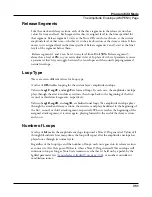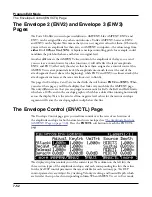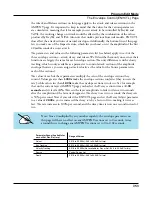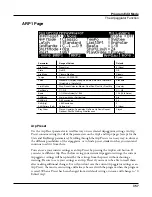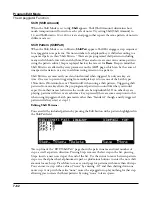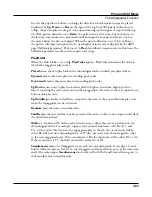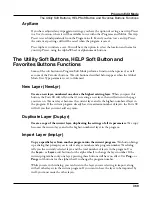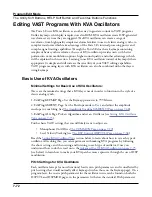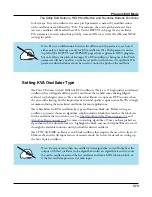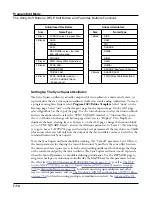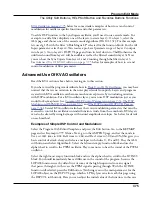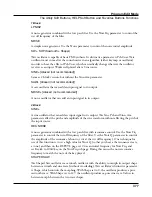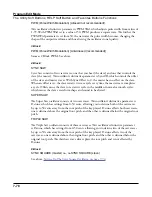
Program Edit Mode
The Arpeggiator Function
7-65
The Velocity Modes Chimp1 through Chimp4 function in a similar fashion to the Human
settings (see above.) Like the Human settings, the Chimp settings randomly change played
note velocity within a range, but the Chimp settings have larger randomization ranges.
The Chimp settings use the velocity received from the first note played as the center of the
randomization range. Each note of the arpeggiator will randomly choose a velocity within
the given range. (See the table below for velocity randomization ranges.)
Velocity Setting
Velocity Randomization Range
Human1
± 3
Human2
± 6
Human3
± 10
Human4
± 15
Chimp1
± 25
Chimp2
± 35
Chimp3
± 50
Chimp4
± 64
Velocity Modes MissNotes1 through MissNotes9 makes the arpeggiator randomly miss
playing a percentage of inputted notes. See the table below for percentages and their
equivalent settings. Each of these settings also randomly changes some of the inputted
velocities in a range of ± 5, with the purpose of simulating a more human played sound.
Velocity Setting
Approximate % of Notes Missed
MissNotes1
% 10
MissNotes2
% 20
MissNotes3
% 30
MissNotes4
% 40
MissNotes5
% 50
MissNotes6
% 60
MissNotes7
% 70
MissNotes8
% 80
MissNotes9
% 90
Note: For Human and Chimp modes, if the velocity of the first played note is low enough
that the selected randomization range could result in a velocity of zero, some notes may
have a velocity of zero and therefore produce no sound..
Note: Missed Notes are actually output as notes with a velocity of zero.

